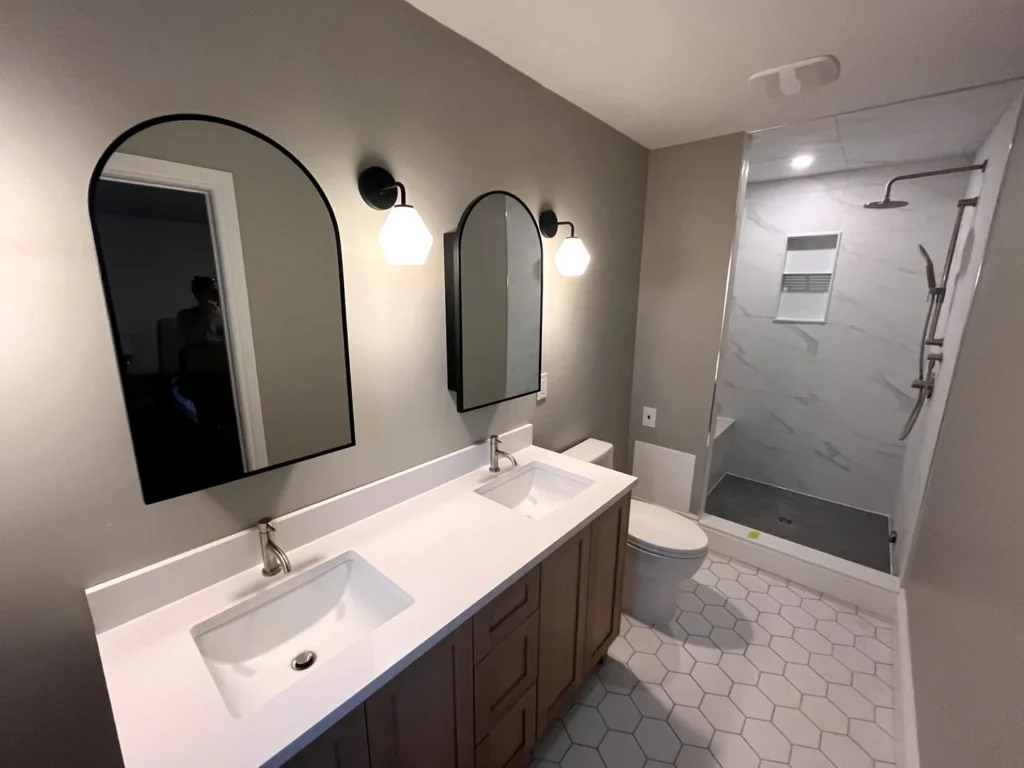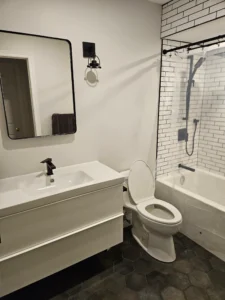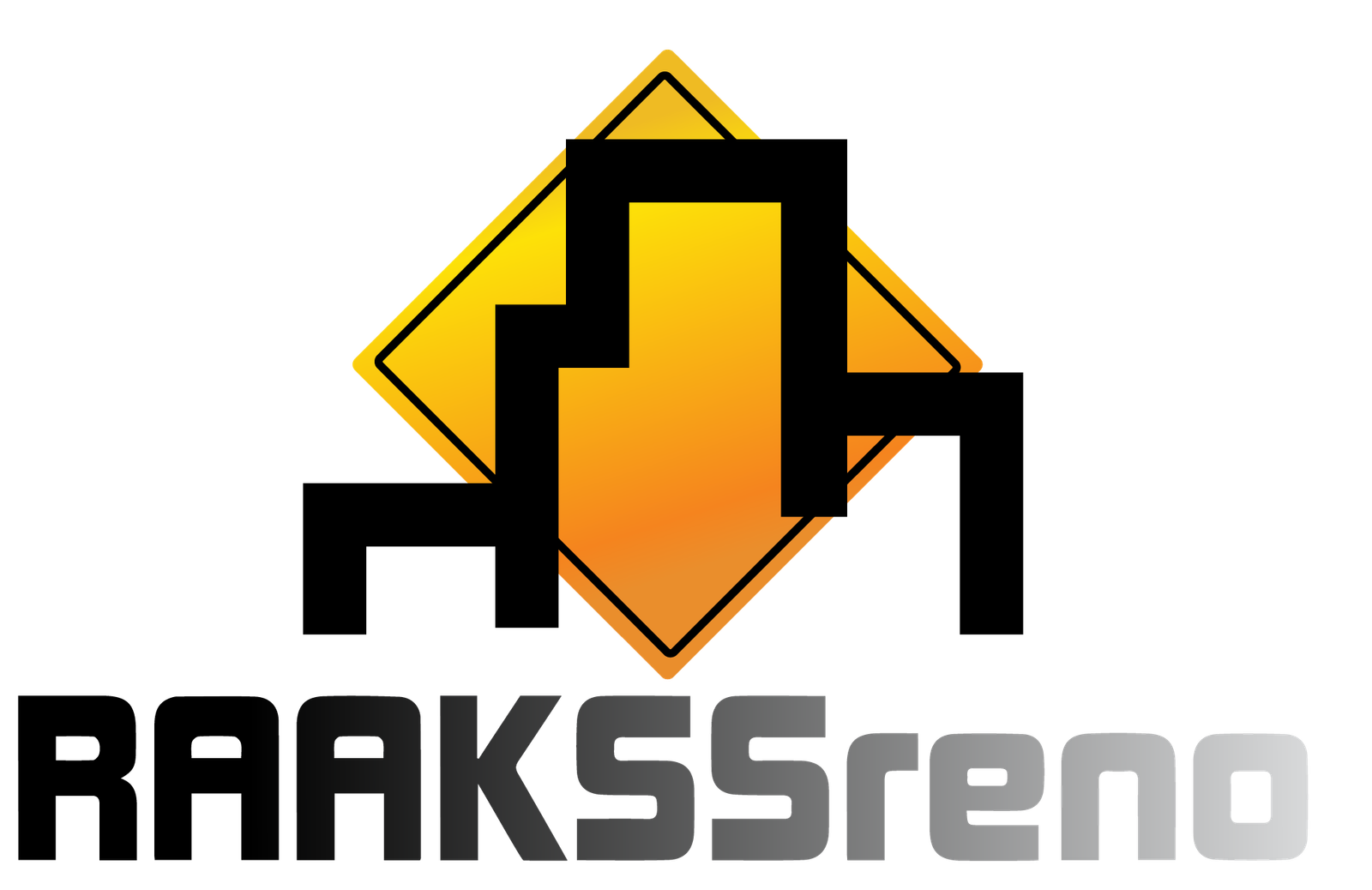
Use our Quote Estimator Tool for a Quick Quote in Under 15 Seconds!
I’m Robbie Fraikin from Raakss Reno. I’ve renovated more than a hundred bathrooms around Toronto, from simple refreshes to luxury spa builds. In this guide, I’ll walk you through the real-world costs I see every week, how scope and materials change your price, where homeowners overspend, and smart ways to get the look you want without waste. I’ll also link to helpful planning resources across our site so you can keep researching confidently.
What’s the average cost of a bathroom remodel in Toronto in 2025?
In my projects, a full bathroom remodel in Toronto usually lands between $12,000 and $30,000, with most “standard” jobs clustering near the middle when homeowners choose good materials without going fully custom. Small makeovers with light updates can run from about $8,500 to $15,000, while large or luxury builds with custom tile work, glass, heated floors, and premium fixtures often range from $25,000 to $40,000+. Your final number depends on size, layout changes, plumbing and electrical needs, tile complexity, glass, and the quality of finishes you select.
If you’re new to planning, my Bathroom Renovation Planning Guide is a good place to start before you set a firm budget.
How I price projects at Raakss Reno
Every home and bathroom is different, so I offer two clear ways to work together. Some clients want a single all-inclusive quote that covers labor and materials; others prefer labor-only with materials purchased directly to keep control of brands and finishes. Either way, I’ll break down the tasks and explain what each line means, so you know where your money goes. You can also browse our Bathroom Renovation Services if you want a quick overview of what’s included.
Small 3-piece bathroom costs (under ~50 sq. ft.)

When I’m renovating a compact 3-piece bathroom, labor-only typically ranges from about $7,000 to $10,000 when we’re keeping the layout and using straightforward tile patterns. If you prefer an all-in package with materials, I usually see totals between $14,000 and $18,000 depending on tile, glass, vanity, and fixtures. If you’re working with a condo board or an older home with surprises behind the walls, allow room in the budget for contingencies, permits, and scheduling windows.
If you’re tight on space, my write-up on Bathroom Storage Solutions can help you plan a cleaner layout before we order fixtures.
Master bathroom renovation costs
Primary suites require more plumbing runs, more tile coverage, and often custom shower glass or a freestanding tub. Labor for masters typically ranges from $9,000 to $14,000. With premium materials and features like large-format porcelain, niche lighting, custom vanities, or stone benches, the total project often reaches $25,000–$40,000+. If you’re curious about timelines, I explain the typical phases in How Long Does a Bathroom Remodel Take?
Where costs climb—and how to control them
Design choices, not just square footage, move the needle. Complex tile patterns, large curbless showers, wall-mounted toilets, and moving drains take more time and specialized skill. Custom glass is made to measure, which adds both beauty and cost. The best cost control is a crystal-clear scope before demo. We agree on tile layout, grout lines, niche size, glass type, and fixture placement up front so there are no mid-project changes that add time or money.
If you love beautiful tile but want to stay on budget, see my ideas in Best Bathroom Tile Ideas. If you’re comparing “cheap vs. value,” my guide on spotting a Good Bathroom Renovation Contractor can protect you from low quotes that balloon later.
DIY vs. hiring pros in Toronto
I’m often asked if DIY can save money. On paper it can, but in bathrooms the “small” details are everything: waterproofing membranes, sloped pans, tile layout, silicone movement joints, and clean drywall finishing. When any of those are off, repairs cost more than doing it right the first time. If you’re a hands-on homeowner, keep DIY to safe cosmetic items and let licensed pros handle plumbing, electrical, and waterproofing. If you’re weighing options, my article on Can You DIY a Bathroom Renovation? walks through the risks plainly.
Heated floors and other popular upgrades
Radiant floor heating is one of the best comfort upgrades. For most bathrooms I install, supply-and-install typically adds about $1,000 to $3,000 depending on size and thermostat type. It keeps the space drier, warms the tile, and makes winter mornings a lot better. Other upgrades homeowners love are walk-in showers, glass enclosures, LED mirrors, and well-planned niches. I cover luxury add-ons—like rain heads, bench options, heated towel bars, and more—in Luxury Bathroom Features and our new post on Luxury Bathroom Features That Add Value to Your Home.
If you’re considering converting a tub, read Should You Convert Your Tub to a Walk-In Shower? here: https://raakssreno.com/should-you-convert-your-bathrooms-tub-to-a-walk-in-shower/
Materials: where to spend vs. where to save

I always recommend spending a bit more on the items you touch every single day: shower valves, faucets, drains, and hinges. Quality valves keep pressure stable and last longer; quality drains and hardware resist corrosion. You can save on vanity boxes, mirrors, and accessories without hurting performance. For eco-friendly choices that also cut utility bills, see Bathroom Renovation Budget Tips and our quick reads on Bathroom Lighting Fixtures and Glass and Mirrors.
Condo bathrooms vs. freehold homes
Condo projects can cost a bit more per square foot because of elevator bookings, quiet-hour rules, protection set-ups, and waste handling. Access and logistics take time. Older Toronto homes can swing the other way because we may uncover aging plumbing, ungrounded wiring, or out-of-level floors. That’s why I suggest a 10–20% contingency. If you’re renovating in a specific area, we serve the GTA broadly—see our local pages for Bathroom Renovations in North York, Aurora, and East Gwillimbury.
Typical scope and what it includes
A full bathroom remodel usually covers demo and disposal, framing fixes, plumbing and electrical updates, waterproofing, tile installation, drywall and paint, vanity and toilet install, shower glass, and finishing details like silicone and caulking. If the layout stays the same and tile patterns are simple, you’ll be toward the lower end of the range. If we’re altering walls, moving drains, building a curbless shower, or adding a wet-room concept, expect more labor.
If you like the open, barrier-free look, read our perspective on wet rooms inside Bathroom Renovation Ideas.
Timeline: how long will it take?
Most bathrooms take about two to five weeks once materials are on site. Smaller refreshes can be faster; highly detailed tile work or custom glass can push longer. Inspections, delivery windows, and condo approvals also add days. I map the milestones and share them before we start, and I explain the order so you always know what’s next. For a deeper breakdown, here’s my post on How Long a Bathroom Remodel Takes.
Common surprises and how we prevent them
Hidden leaks, old galvanised pipes, and unvented fans are the usual suspects. I check for them early and build realistic allowances. Another common surprise is tile over tile, or floors that aren’t flat, which affects large-format porcelain. We laser the room, plan transitions, and confirm the tile pattern on day one so installs look clean and true. If you’re buying your own materials, I’ll review specs for compatibility—especially for drains, valves, and glass.
If you’re curious what we often fix behind the scenes, I wrote about it here: Renovation Mistakes We Fix Most Often.
How to reduce your bathroom renovation costs (without regret)
The best way to save is to keep the layout and invest in quality where it matters. Choose durable porcelain tile over fragile stone, keep your shower size reasonable, and avoid last-minute changes. Use open niches or a single glass panel instead of complex door systems. If budget is tight, refresh your vanity top and hardware now and plan a future upgrade for smart mirrors or towel warmers. If you’re comparing DIY vs. pro, my article on Bathroom Repairs You Shouldn’t Ignore explains why cutting corners on waterproofing is never worth it.
Sample cost ranges by goal
If you want a tidy refresh with new tile, fresh paint, a modern vanity, and updated fixtures—no layout changes—you’ll likely land in the low-to-mid range. If you want a walk-in shower with niche lighting, a frameless door, heated floors, and custom cabinetry, you’ll be closer to the higher end. If the dream is a full spa experience with steam, rain head plus hand shower, bench seating, and large-format slabs, that’s a luxury build and we’ll spec every component so the final number is predictable.
If you need help prioritizing, browse Bathroom Renovation Ideas and our Home Renovation Blogs for design direction.
Frequently asked questions
How can I set a realistic budget?
List the must-haves first: a reliable shower system, quality tile, good lighting, and ventilation. Then add nice-to-haves like heated floors or niche lighting. Keep a 10–20% contingency for the unexpected, especially in older homes.
What’s the most expensive part?
The shower area usually leads the budget. It includes waterproofing, tile, glass, and plumbing fixtures. Complexity in layout and tile pattern adds labor hours, so simple patterns save money without sacrificing durability.
Are eco-friendly features worth it?
Low-flow fixtures, LED lighting, and efficient exhaust fans reduce monthly bills and improve comfort. Durable porcelain tile, quality valves, and proper insulation also reduce maintenance over the long term. See our Budget Tips for more ideas.
Can I keep costs down but still modernize the look?
Yes. Keep the layout, choose a timeless tile, use a single glass panel for the shower, and upgrade lighting. Add one premium feature—like a great shower valve or heated floor—and keep other choices mid-range.
How long will my bathroom be out of service?
Two to five weeks is typical once we start. If you have only one bathroom, I’ll help plan timing so you have alternatives during critical days like waterproofing, tile setting, and glass install.
What about small, targeted projects?
You don’t have to do everything at once. Many clients start with a shower upgrade or new floor and vanity, then plan phase two later. If you’re thinking about a tub-to-shower conversion, read this guide: https://raakssreno.com/should-you-convert-your-bathrooms-tub-to-a-walk-in-shower/
Ready to plan your Toronto bathroom renovation?
If you’re in Toronto or the GTA and want a clear, line-by-line quote from a contractor who explains every choice, I’m here to help. Start with our Bathroom Renovation page, browse our Projects, and check our latest design posts like Best Bathroom Tile Ideas and Bathroom Lighting Fixtures. When you’re ready, send a note through our Contact page and we’ll talk through your goals, budget, and timeline.
